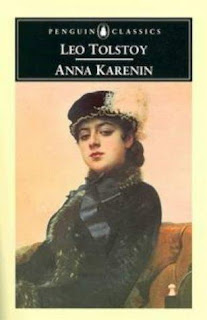 One of my all time favourite novels is Madame Bovary (1856) by Gustave Flaubert in which Emma Bovary, a young naïve woman, marries a simple small town doctor. Emma reads romantic literature and is unable to distinguish reality from fiction. She takes a lover and lives a dual life of faithful wife to her husband and mistress in her own romantic fantasy. Emma begins to yearn for refinement and starts spending money on objects that she cannot afford, going into debt and becoming ruined by her adultery. Flaubert’s writing is beautiful, humourous and richly descriptive.
One of my all time favourite novels is Madame Bovary (1856) by Gustave Flaubert in which Emma Bovary, a young naïve woman, marries a simple small town doctor. Emma reads romantic literature and is unable to distinguish reality from fiction. She takes a lover and lives a dual life of faithful wife to her husband and mistress in her own romantic fantasy. Emma begins to yearn for refinement and starts spending money on objects that she cannot afford, going into debt and becoming ruined by her adultery. Flaubert’s writing is beautiful, humourous and richly descriptive.
German author Theodor Fontane’s 1895 novel Effi Briest tells a similar tale. At the age of seventeen young and immature Effi is married to a much older man. As her husband travels regularly, Effi becomes lonely and socially isolated in her new home. A notorious womaniser, Crampas, visits Effi and they begin a relationship. When her husband learns of Effi’s disloyalty he seeks divorce and custody of their daughter. This is a melancholy, deliberately paced novel with realistic characters that are not reduced to stereotypes. There are multiple layers to this story too – exploring the decline of the German aristocracy and the pressures of Victoria morality.
Tolstoy’s Anna Karenina (1877) is the story of Anna’s adulterous romance with Count Vronsky, which leads to tragic consequences. The aristocracy has a code of behaviour to which all members must conform. Leaving her loveless marriage and abandoning her child condemn Anna and force her exile from Russian high society. Tolstoy examines Anna’s motives without judgement. There are many characters and plot lines to keep track of. Littered with beautiful passages, Anna Karenina has one of the best opening lines of any novel: “Happy families are all alike, each unhappy family is unhappy in its own way”.
This trio of tales are often compared and contrasted. To view these stories as simply romances misses the complexities and richness each author brings to his social critique. The women at the centre serve as vehicles to explore morality, politics, class, and even religion. Each one is extraordinary it its own right and should be treasured as uniquely individual. The authors are masters of their craft. Of the three, Madame Bovary is perhaps the most accessible – better known than Effi Briest, and shorter and less daunting than Anna Karenina. Which is perhaps why I have read Bovary many, many times and the others only once.

